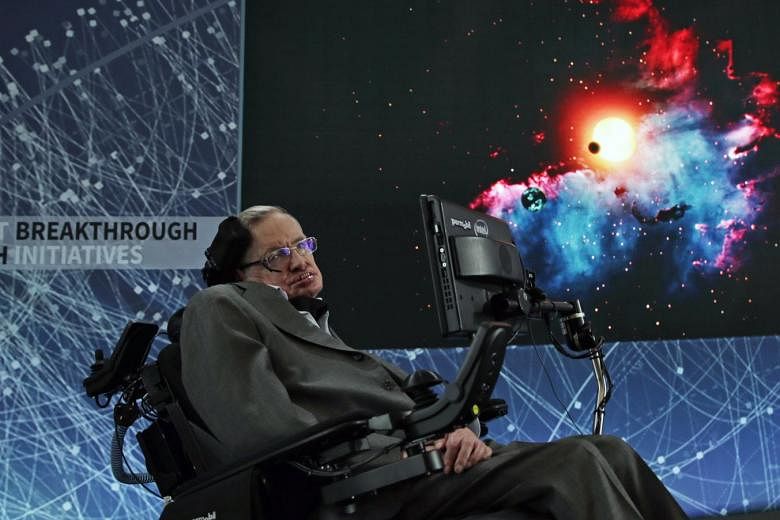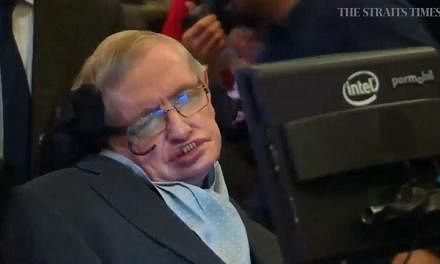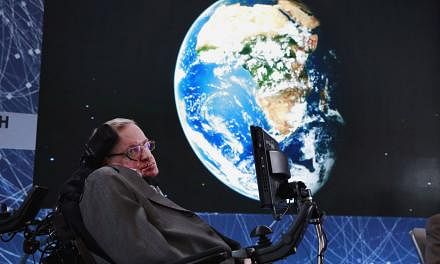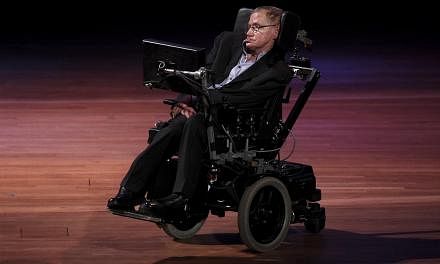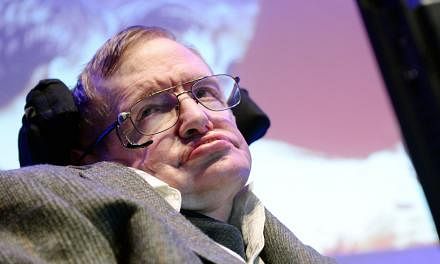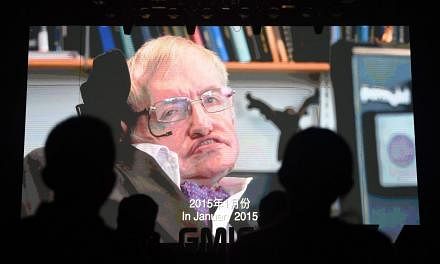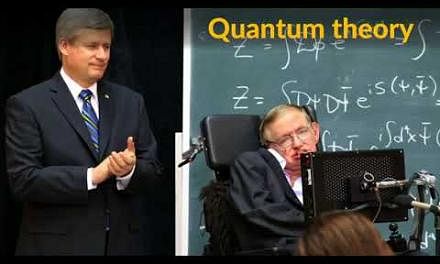British physicist Stephen Hawking, who was at the forefront of unraveling the secrets of the universe, died at the age of 76 on Wednesday (March 14).
The famed scientist, who was regarded as a genius, spent most of his life in a wheelchair due to a motor neurone disease called amyotrophic lateral sclerosis or ALS.
Despite being left paralysed and unable to speak due to the disease, Dr Hawking continued to contribute to scientific advancements in relativity and quantum theory throughout his life.
Here are some interesting facts about his life.
1. He started his university education at 17 years old
Dr Hawking began his university education at University College, Oxford, in 1959, where he specialised in physics.
According to several biographers, he found academic work too easy and got bored.
Eventually, he graduated with a first-class degree in natural sciences.
He then moved on to pursue graduate studies at University of Cambridge, where he read cosmology.
He completed his doctoral studies in 1966, and obtained a doctorate in applied mathematics and theoretical physics, specialising in general relativity and cosmology.
He was also awarded a fellowship at Gonville and Caius College, Cambridge.
After graduating, he continued his research on singularities in the theory of general relativity and the study of black holes, and collaborated with mathematician Roger Penrose.
2. He was diagnosed with ALS at 21 years old
Dr Hawking had just started his graduate education when he was hit by the news that he had ALS.
He became depressed and lost interest in his studies as doctors predicted he would only live for two years. After much encouragement from his doctoral supervisor, he regained interest in his studies and resumed his research.
As he began to lose his ability to speak and became paralysed from the disease, Hawking developed different methods of communication.
Initially, he used his eyebrows to choose letters on a spelling card. But by 1986, he received a new way to talk to others - a computer program that allowed him to press a switch to select phrases, words or letters.
A small computer was made to attach to Dr Hawking's wheelchair, with the program installed. The program translated the words into computerised speech with an American accent.
The program allowed Dr Hawking to produce up to 15 words a minute.
In 2005, as Dr Hawking began to lose function on his hand, he controlled the computerised communication device with his cheek muscles instead and managed to produce about a word per minute.
Meanwhile, he collaborated with researchers from Intel to develop a system that could translate his brain patterns or facial expressions into switch activations.
Separately, in 2014, Dr Hawking participated in the viral Ice Bucket Challenge to raise funds for ALS. But as he had pneumonia, Hawking did not pour ice over himself - his children took his place instead.

3. He was an avid writer
Dr Hawking published many books throughout his life, including ones to teach the masses about the cosmos.
One of his most acclaimed books is A Brief History Of Time, which aimed to educate average readers with no prior knowledge about scientific theories about the structure, origin and development of the universe.
The book, published in 1988, became a bestseller with more than 10 million copies sold in 20 years. It has also since been translated into more than 35 languages.
It is recorded in the 1998 Guinness Book of Records as an all-time bestseller.
Other books he authored include The Universe In A Nutshell, which explains the history and principles of modern physics; On The Shoulders Of Giants: The Great Works Of Physics And Astronomy; and The Theory Of Everything: The Origin And Fate Of The Universe.
He also co-authored a children's book with his daughter Lucy, titled George's Secret Key To The Universe, to explain theoretical physics to younger audiences.
4. He was a prominent figure in pop culture

Dr Hawking made a holographic appearance in an episode of Star Trek: The Next Generation in 1993, after actor Leonard Nimoy heard that the scientist was keen on appearing on the TV show.
Dr Hawking's voice has also been used in a Pink Floyd song titled Keep Talking, and for the narration of a segment during the 2012 Summer Paralympics opening ceremony in London.
He has also appeared on the popular adult cartoon The Simpsons, Futurama and comedy sitcom The Big Bang Theory.
Several documentaries have also been made about Hawking, including a BBC television film in 2004 starring Benedict Cumberbatch, and movie The Theory Of Everything, for which actor Eddie Redmayne won an Academy Award for Best Actor for his portrayal of Dr Hawking.
5. He has a long list of awards and honours to his name
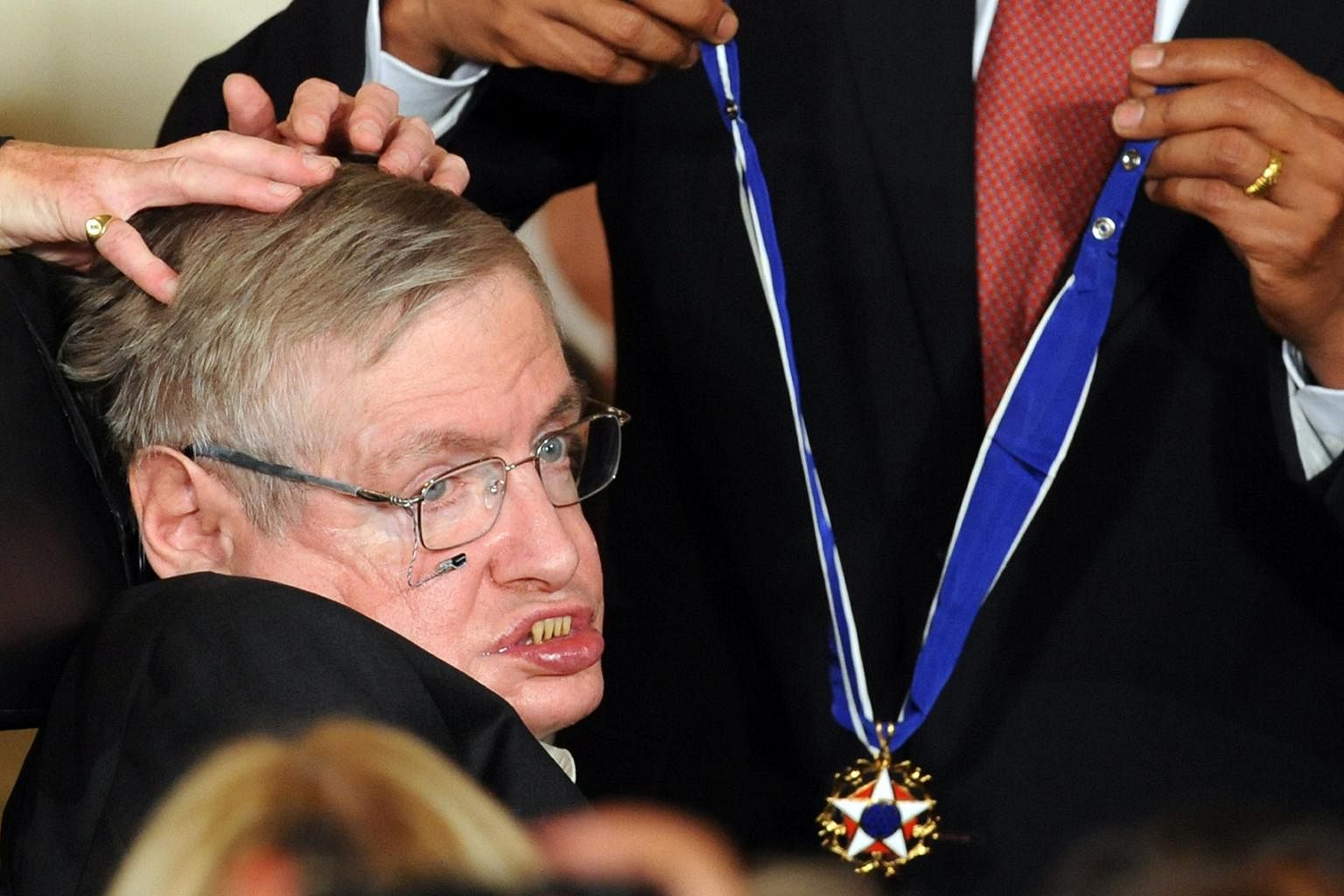
At 32 years old, he was elected a fellow of the Royal Society for his "major contributions to the field of general relativity".
At 40, he was awarded a CBE, or Commander of Order of the British Empire, by the Queen.
More recently, in 2016, Dr Hawking received the lifetime achievement award "for his contribution to science and British culture" at the Pride of Britain Awards.
He has also received the Presidential Medal of Freedom in the United States, the highest civilian award in the country.
6. He made many breakthroughs in the study of blackholes
His first major breakthrough was in 1970, at age 28, when he and mathematician Roger Penrose showed that a singularity, a region of infinite curvature in spacetime, lay in our distant past: the point from which came the big bang, according to the Guardian.
Four years later, he used quantum theory to propose that black holes would emit heat and eventually cease to exist - stirring up much debate in the scientific world.
7. He enjoyed making bets with his scientific rivals
In 1975, he made a bet with US physicist Kip Thorne that the cosmic X-ray source Cygnus X-1 was not a black hole. He lost in 1990 - and had to buy Dr Thorne a subscription to men's magazine Penthouse.
Later on, in 1997, he made another bet, this time with Dr Thorne against fellow theoretical physicist John Preskill that information is lost in black holes. Dr Hawking conceded the bet in 2004.
Most recently, Dr Hawking also lost US$100 (S$131) to fellow scientist Gordon Kane, for betting that the Higgs boson would never be discovered.
